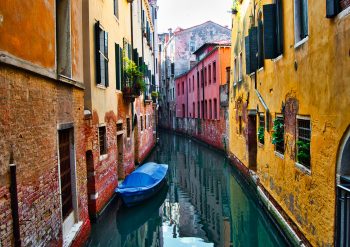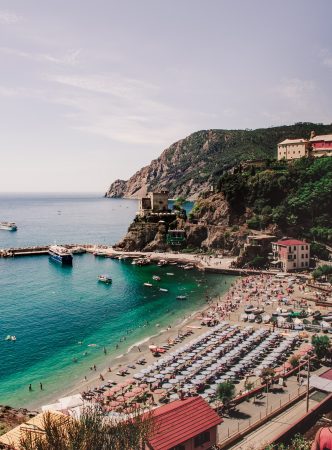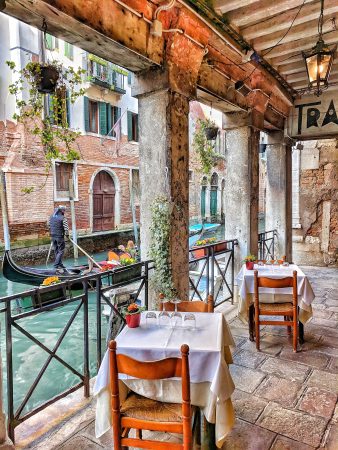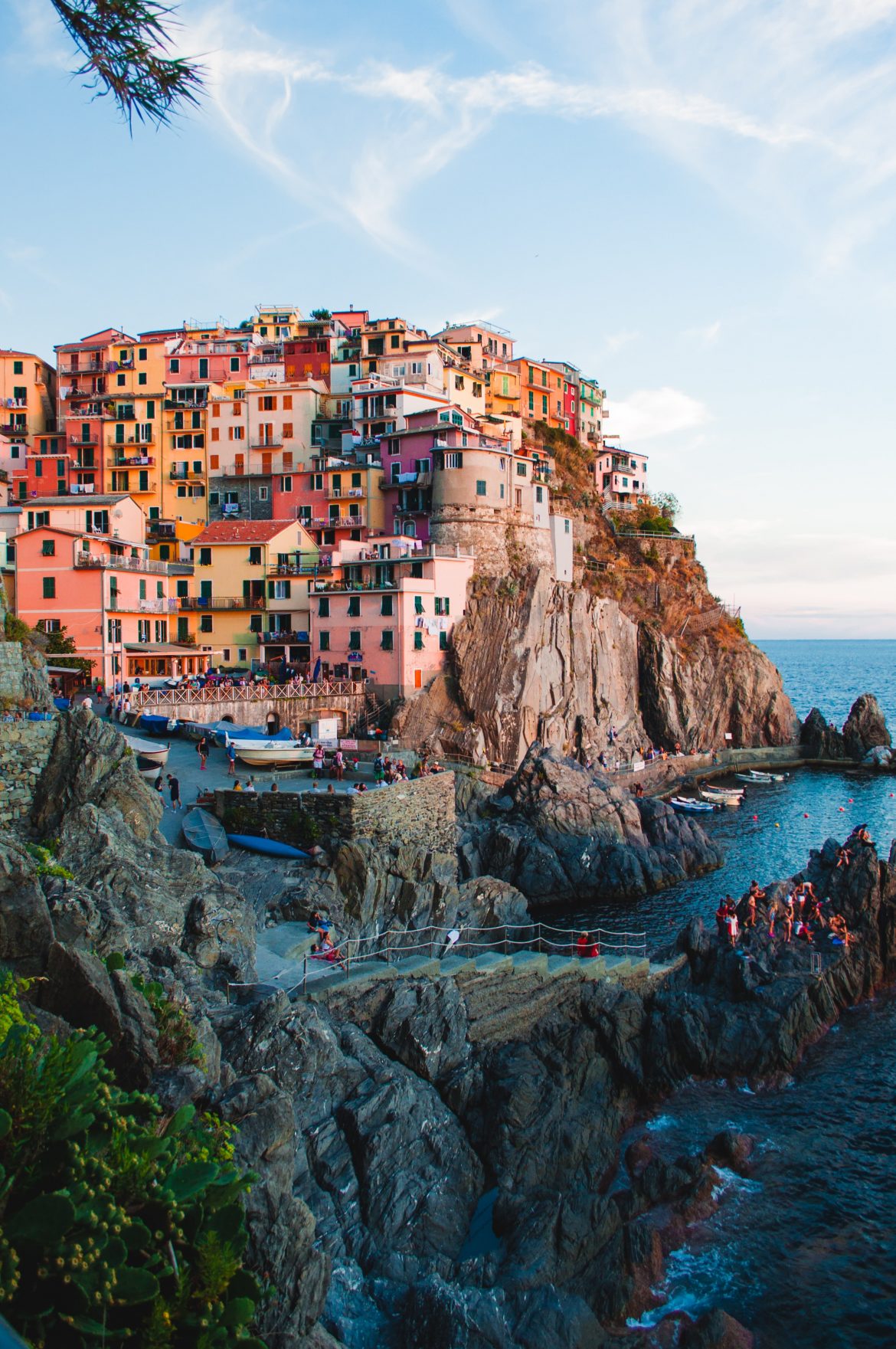Perched delicately along a sun-dappled stretch of the Italian Riviera, postcard-pretty cinque terre is the perfect place to experience a bucolic lifestyle.
The sainted calm of the Cinque Terre – with its remote, quaint villages that rebel against a world with its finger on the fast-forward button – helps to recharge flagging spirits and reconnect with what’s important. The region seduces your senses with simple pleasures such as savouring delicious food, listening to the murmur of a nearby beach, feeling the caress of a salty sea breeze and soaking up the dramatic scenery. The good news is that even though exchange rates are not in South Africans’ favour, it is possible to enjoy Cinque Terre without putting too much of a dent in your bank account.
With its marked absence of modern trappings, namely fast-food places, large hotel chains, traffic (vehicles are restricted in most places) and grand boats (they’re not allowed to dock here), the Cinque Terre area comprises charming, truly authentic fishing villages reminiscent of a bygone era. Its history can be traced back to medieval times. The oldest of the towns, Monterosso al Mare, was founded when villagers fled to the coastline to escape the barbarians in 643 CE. The Cinque Terre (meaning ‘Five Lands’ in Italian) is a national park situated near Pisa, comprising the five villages of Monterosso al Mare, Vernazza, Corniglia, Manarola and Riomaggiore. And while each village has its own personality, all are equally perfect for whiling away quiet time.

Image by Imad via Unsplash
Riomaggiore is what you could describe as the quintessential girl next door – simple, unaffected and strikingly beautiful. A main street dotted with little shops, a cosy harbour and steep walkways aplenty make up the town. Manarola is the poser – it makes for picture-perfect photos, no filter needed at all. Climbing the Lardarina – the seemingly endless zigzag staircase (382 steps to be precise) – up to Corniglia (there is a bus into town too, but where’s the fun in that?) is a bit like twisting your fork into a plate full of pasta, leaving you wondering whether you’ve bitten off slightly more than you can chew. Vernazza is the supermodel, flaunting her curves and showing off all her best sides for the camera, while Monterosso is the fashionista, with its resort-like feel, promenade, variety of restaurants and arty stores.
All the villages seem to have received a saturated splash of colour: an ocean of bold azure brushstrokes decorated with the glitter-like effect of the sun’s reflection, luscious green vines, fishing boats painted in primary colours and the region’s trademark of brightly coloured homes (apparently so fishermen could identify theirs from a distance) set against steep slopes. The Cinque Terre was declared a World Heritage Site by Unesco for ‘the harmonious interaction between people and nature to produce a landscape of exceptional scenic quality’.
The relationship between man and nature has been tempestuous though. On 25 October in 2011, a flash flood caused the main river to overflow, and Vernazza and Monterosso were ravaged by avalanches of mud, which killed a number of people, destroyed agriculture and property and blocked the town’s transport system. So severe was the combined damage, Monterosso’s mayor Angelo Betta said at the time, ‘Monterosso no longer exists’.
The villages have since been rebuilt and are being restored to their former glory. This natural disaster gives one newfound appreciation for their tranquil yet resilient beauty.

Monterosso al Mare, Italy | Image by Jack ward via Unsplash
Unplug and unwind
One is reminded of the Spanish proverb ‘How beautiful it is to do nothing, and then rest afterwards’ when strolling about in any of the Cinque Terre villages. Because, ideally, the best itinerary here is, quite frankly, not to have one. There’s no sense of urgency in this area, and any deadlines will soon become a distant memory.
If you’re staying over in any of the villages, I’d recommend that you wake up early and enjoy a freshly brewed cappuccino and biscotti overlooking the water, before the rest of the villagers wake up and throngs of day visitors arrive.
When asking for a map at one of the information centres, be prepared to get no more than a chuckle at the thought from authorities, as the villages are too small to justify one. Most of the towns have one or two main streets, so there’s no chance of getting lost. Quaint parish churches, statues and the odd castle punctuate the landscape. Citrus trees, olive groves and prickly pears can be found in abundance. A profusion of trellised vineyards interspersed with dry stone wall are arranged against the steep cliffs like layers on a tiered cake.

Image by Igor Oliyarnik via Unsplash
It’s little surprise that the Cinque Terre is also known for its hiking trails between the various towns. Ensure that you have good walking shoes and sufficient water, regardless of whether you plan to tackle the hiking trails or simply meander around town. Each town is a narrow web of streets, and it’s recommended that you walk to the top of the various villages for the best vantage point. The views from the top are worth the strenuous effort of the climb.
Tantalise your tastebuds
You’ll later be thankful to have had some form of exercise, otherwise you may start contemplating undoing the top button of your pants towards the end of the holiday, considering the gastronomic delights the Cinque Terre has to offer. Good food is what Italians are renowned for. Feast on delicious home-made pesto, pure olive oil and limoncello. Saucy pastas and hot pizzas can be ordered at just about any restaurant in the villages. No day is complete without a scoop of gelato. Ice cream is easily found in the Cinque Terre, but deciding which of the flavours to indulge in is the delicious dilemma. Find a spot to enjoy your icy treat, or the fruits of the farmers’ labour in the form of wine, while taking in your surroundings. A visit to the Cinque Terre is living la dolce vita at its very best!
[Featured image by Jack Ward via Unsplash]

